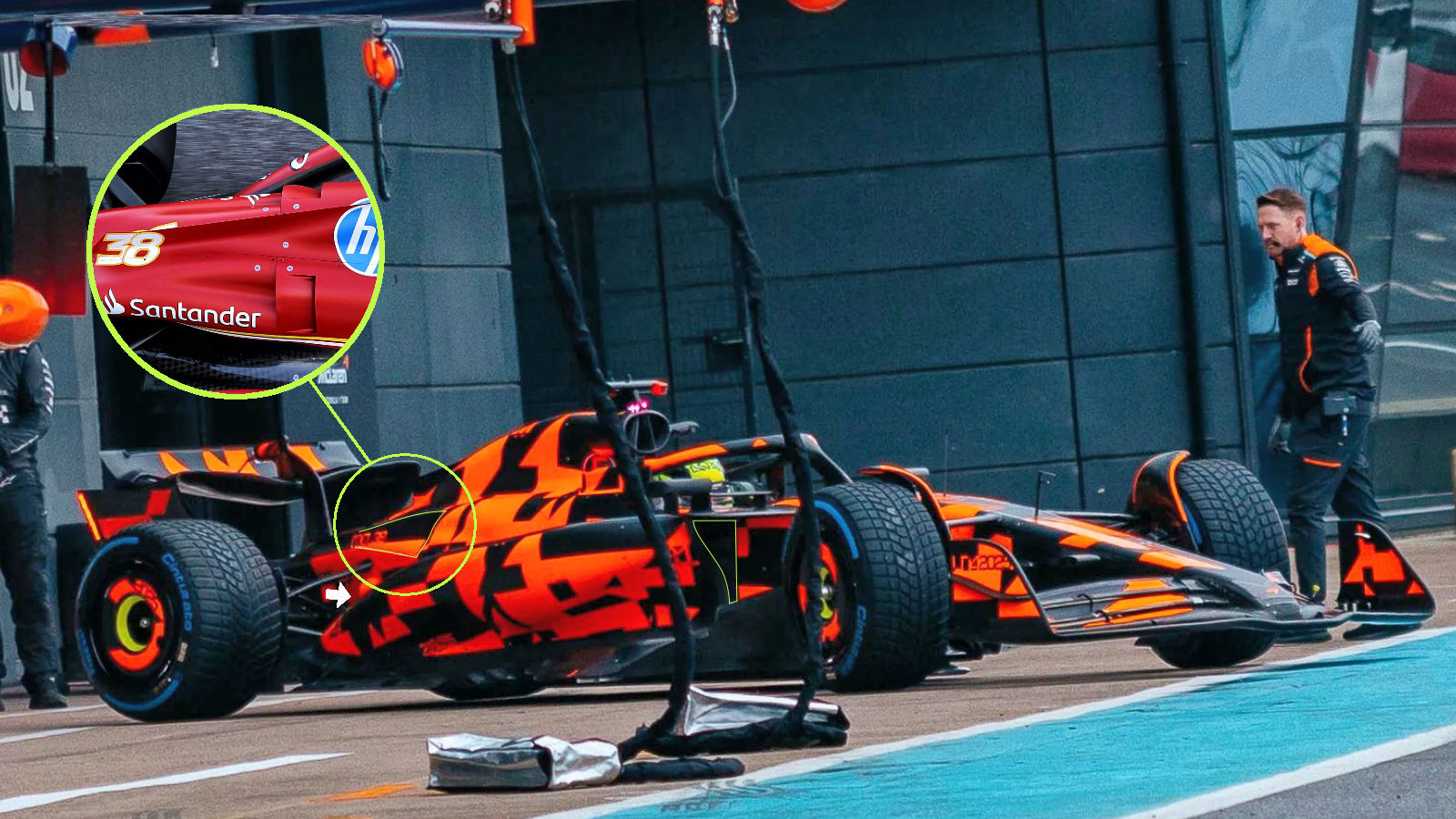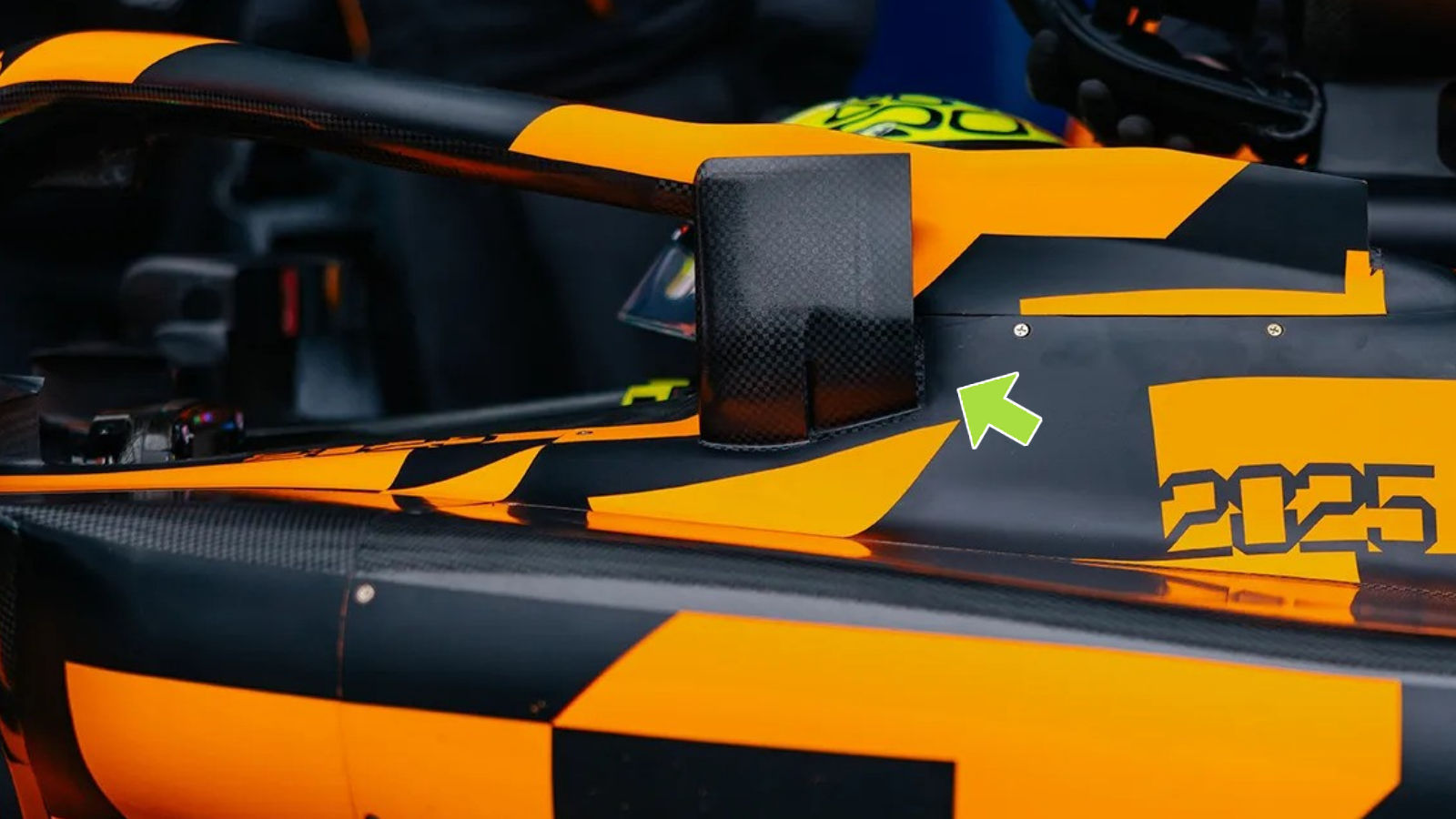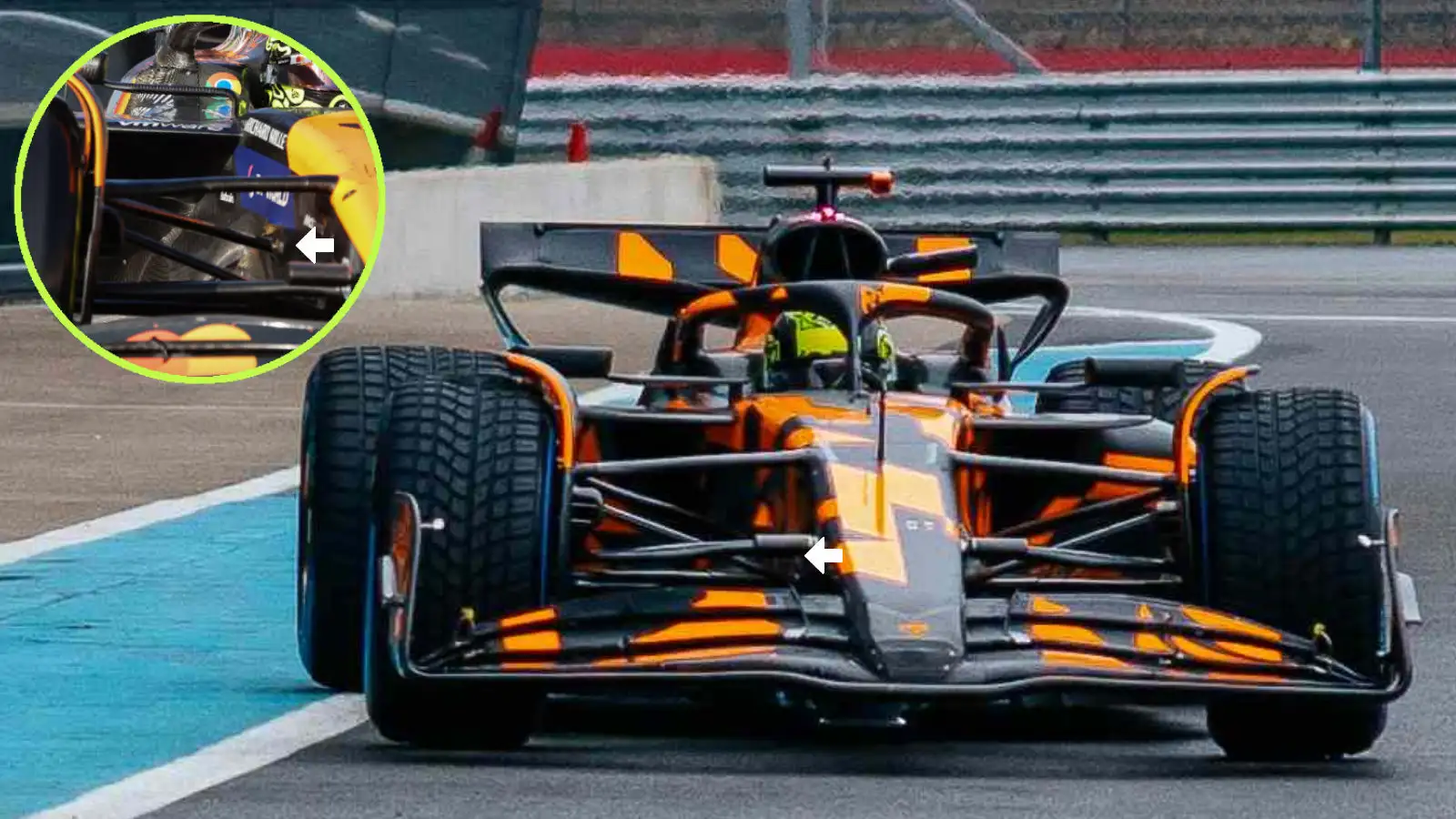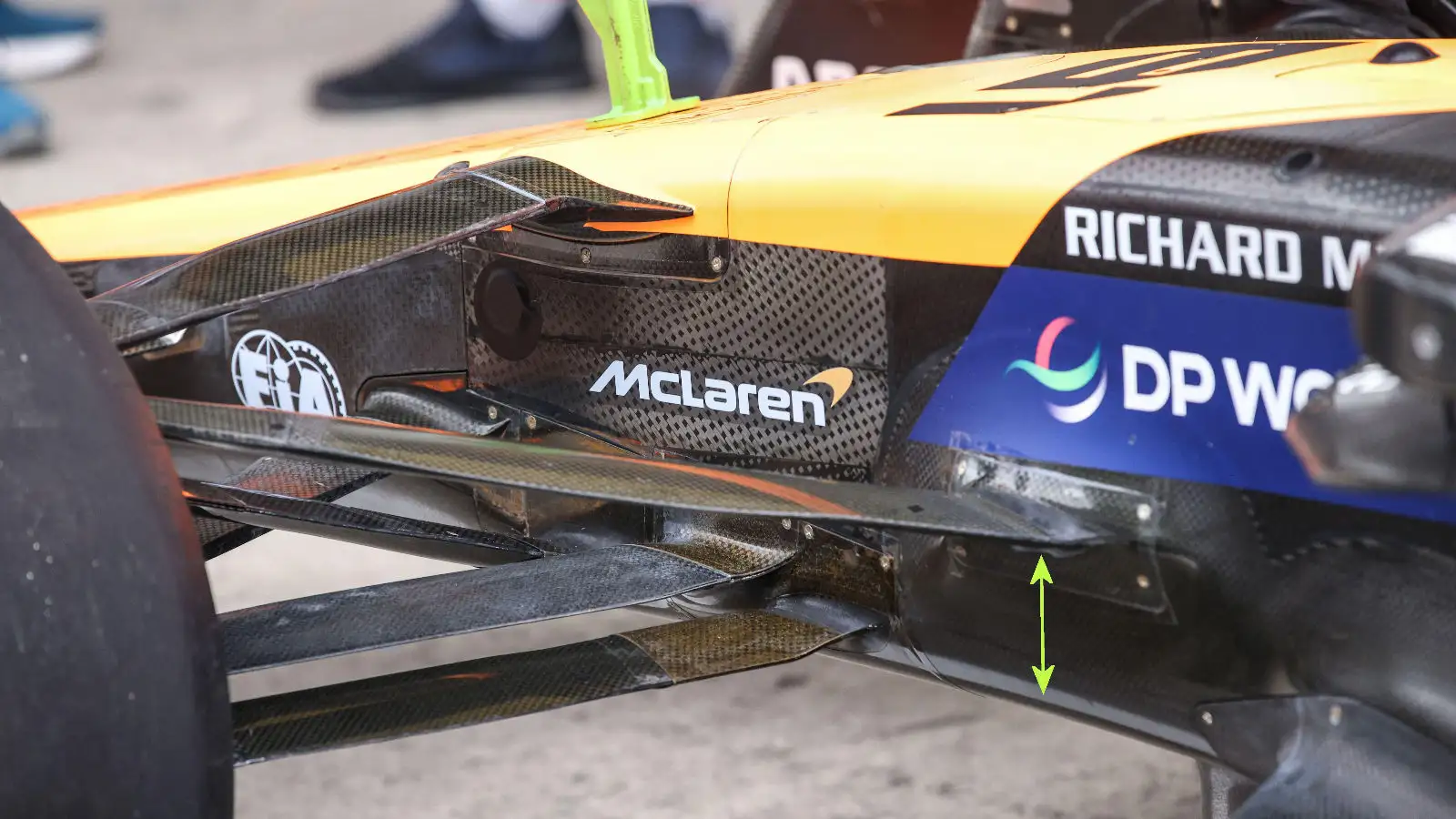
2025’s car launch season is underway as McLaren decided to get a jump on their rivals and shake down their new machinery at Silverstone today.
The unscheduled arrival of the MCL39 gives us our first opportunity to see how teams plan to deal with what is essentially a transitional year, before focus shifts to the new regulations for 2026.
McLaren MCL39: Looking through the smoke and mirrors
In that respect, the new McLaren doesn’t disappoint, with last year’s Constructors’ champions seemingly able to use the momentum they built in that campaign and carry it across to this year, with a number of significant changes made to the MCL39 along the way.
The car seen at the shakedown features a front wing that’s carried over from 2024, with McLaren introducing this sort of design at the United States Grand Prix.
However, the nose may have been reprofiled, with what appears to be a more recessed upper surface around the onboard camera housings, albeit this could be a visual trick created by the camo livery.
This kind of change would also make sense from an aerodynamic point of view, as the team have made a significant alteration to the layout of the front suspension, albeit with a pull-rod arrangement still at the heart of it.
The big change here comes in the form of the upper wishbone, with the already offset arrangement inclined further for 2025, resulting in the rear leg being mounted even further down the chassis than it had been in 2024 and more inline with the pull-rod.
This has been highlighted with white arrows on the left-hand image, with the MCL38 inset, whilst the green arrow on the right image of the MCL38 gives an idea of how the leg has been moved further down on the chassis this year.
Clearly this will have some mechanical benefits, especially in terms of anti-dive properties but, the arms placement also has to be carefully managed to improve the aerodynamic flow downstream, suggesting McLaren have found a decent performance trade-off.
More from McLaren’s surprise MCL39 launch
👉 First McLaren MCL39 impressions revealed with ‘new innovations’ teased
👉 McLaren release more MCL39 shots after shock Silverstone launch
There’s also a small change to the shape and size of the front brake duct inlet, which perhaps signifies the arrival of changes beneath the skin too.
Now, whether that’s just in terms of the passage of air through the brake duct and the various internal channels, or new, more efficient brake components have been introduced. Unfortunately, we will have to bide our time here though and see what’s changed when the car is in a state of undress come pre season testing.
McLaren also appear to have focussed heavily on optimising the MCL39’s cooling, with changes having been made to both the airbox and sidepods. The former has resulted in a more oval inlet encompassing the rollover hoop, with the side ducts beside the primary, triangular inlet, enlarged as a result.


Meanwhile, the sidepod’s inlets have also been revised, taking on the now widely adopted P-shaped profile, in order to help tidy up some of the aerodynamic losses from the side of the chassis (green outline added to the image above for clarity).
This is a design direction we first saw from Ferrari in 2023, albeit with a designated inlet being utilised on that occasion, with other teams, also including Ferrari, opting to merge the vertical portion of the inlet with their main sidepod inlet thereafter.
The arrival of another small outlet behind the downwashing sidepod bodywork and ahead of the coke bottle region, at the rear of the car (white arrow), might indicate that McLaren have taken note of what appeared to be a sidepod-length bypass duct on the Red Bull RB20, albeit it could as easily form part of the internal sidepod cooling regime.
The shape change for the sidepod inlet has also undoubtedly unlocked some further potential when it comes to the design of the undercut, although the remainder of the bodywork seems relatively unchanged at this stage.
Despite changing the size and shape of the inlet, the overbite panel remains, with the addition of an enlarged outboard mirror mounting used to frame the sidepod’s shoulder.
The inboard mounting has also been adjusted and now forms a T-shaped array, in order to provide more aerodynamic support.


Also added in order to take advantage of the aforementioned alterations, McLaren have added a double element vertical winglet, similar in concept to the ones already seen in this location on both the Ferrari and Aston Martin cars last season.
Shifting focus back to the engine cover bodywork and McLaren have busied themselves with more optimisation of the layout, taking some benefits from the revised airbox shape, that’s allowed them to more quickly taper the bodywork and shorten the shark fin arrangement, which has, in turn, allowed them to reprofile the MCL39’s shoulder section, which also seems to have a similar outlet arrangement to the one utilised by Ferrari last season on the SF-24 (inset).
The rear wing seen during the shakedown is a carryover from 2024, with the team having introduced this specification at the Brazilian Grand Prix.
And, whilst the floor doesn’t seem to feature any new solutions at this stage either, there’s not only going to be our prying eyes on the limited shots of the McLaren, the other teams will also be on high alert too, meaning those kind of features will undoubtedly be unveiled at a later date.
Read next: McLaren fire first shot to rivals with ‘title challenger’ MCL39 launched






